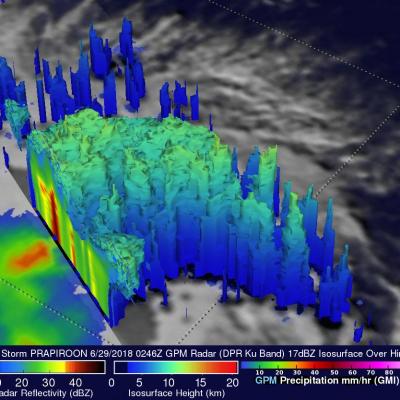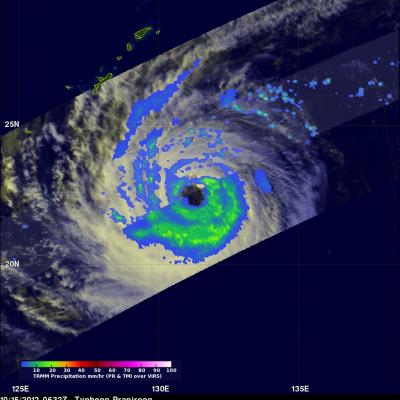GPM IMERG Analyzes Rainfall from Powerful Typhoon Prapiroon
The image above shows estimates of accumulated rainfall using IMERG (Integrated Multi-satellitE Retrievals for GPM) data formed during the period from June 28-July 6, 2018. Typhoon PRAPIROON developed in the northwest pacific Ocean east-northeast of the Philippines on June 28, 2018. PRAPIROON became a typhoon on July 2nd as it approached the Korea Strait between Japan and Korea. Stormy weather had already produced heavy rainfall in Korea and Japan before typhoon PRAPIROON moved through the area. IMERG estimates indicated that PRAPIROON and other stormy weather dumped over 512 mm (20.2 inches)





